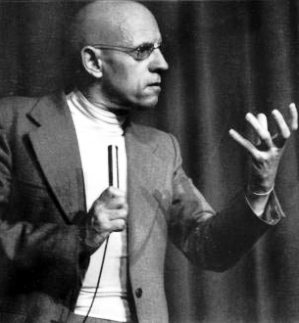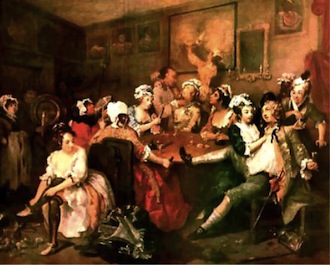Six Principles of Heterotopias

Just
as I begin writing this wiki essay, an art project called
X-TOPIA
and Y-TOPIA done by a group of MIT graduate students
on utopias, dystopias and heterotopias has just began. That
I, hundreds of miles away from where the actual exhibit
exists in a real space, can stumble upon this on what can
be considered the ultimate heterotopia, the internet, is
astounding. That is, the internet exists in very real spaces.
Yet nearly an infinite number of placeless spaces are possible
given a internet connection and a computer.
So what then is a heterotopia? It is a space, mobile or stationed, where utopias and real space meets. By utopias, according to Foucault, “are sites with no place” (Foucault, 1987, p. 24). An example of a heterotopia, according to Foucault, is a church. This is a place that actually exists in physical form, but many non-physical sites can exists here as well. For instance, the church connects the visitors to heavenly beings and places. This is the reason why the internet is considered a heterotopia because even though the signals that are sent are real, the images are just representations of the real or even just imagine spaces made real in both a virtual and shared sense. This is especially evident in the case of chat rooms, in which people involved in the chat are creating a virtual space that does not exist in any one geographic region.
Michel Foucault focused primarily on
heterotopias of crisis and heterotopias deviance in the
article Of Other Spaces in which he stated that
the latter was replacing the former (Foucault, 1987, p.
24). Heterotopias of crisis existed for people during turbulent
times in their lives. A hospice is one example of a heterotopia
of crisis because it is a place that people go to in the
last few months of their lives and must reflect on their
lives and what may come after death. Reliving one’s life
is a way of visiting many different places that no longer
exist except in one’s own mind. Heterotopias of deviance
exist for people that do not conform to the norms of society.
The primary example of this type of heterotopia is a prison.
According to Foucault, there are six principles that all
heterotopias have in common.
A
Crisis Heterotopia

Six Principles of Heterotopias
The
first principle is that all cultures use heterotopias and
this is universal to all humans (Foucault, 1967, p. 24).
“The second principle of this description of heterotopias
is that a society, as its history unfolds, can make an existing
heterotopia function in a very different fashion; for each
heterotopia has a precise and determined function within
a society and the same heterotopia can, according to the
synchrony of the culture in which it occurs, have one function
or another” (Foucault, 1967, p. 25). Foucault went on to
describe a cemetery and how its functions have changed in
western culture from existing as central to existing as
peripheral to the city. Yet, a more modern day example of
an ever changing heterotopia is the internet. While there
has been countless changes and additions of functions of
the internet, the first major change was from that of a
space for exchange of scientific information to a space
primarily for entertainment purposes. Another interesting
example bellow is of the changing nature of heterotopias
comes from an article titled Heterotopia - Art, Pornography
and Cemeteries.
"A heterotopia can also change its meaning through history (in much the same way that a signifier acquires a new signified), like for instance the porn-theatres in Times Square in New York. Following the new regulations governing the district, the traditional stomping grounds for the sex industry in New York have been transformed into Disney entertainment centres for the ”whole family”. From being a space that reflected the surrounding society through the investments of sexuality or ”perversity” as such – the area is being turned into a heterotopia of compensation, constituted by an over-perfect representation of American middle class and working class ideals (Åsdam, 1995).
First
Amendment not supported for adult theaters in New York (click
for court precedence)


The third principle is that, “The heterotopia is capable of juxtaposing in a single real place several spaces, several sites that are in themselves incompatible” (Foucault, 1967, p. 25). With just one computer screen, several virtual spaces can be open simultaneously and/or in series than can be quite different from each other. Just like a theater of the past could hold many different plays, computer screens can hold an indefinite amount of virtual spaces. Just as heterotopias can represent different spaces, they can also represent different times. “Fourth principle. Heterotopias are most often linked to slices in time - which is to say that they open onto what might be termed, for the sake of symmetry, heterochronies” (Foucault, 1967, p. 26). Foucault used the idea of museums as an extreme example of a physical space holding many different illusions of space that were representative of different times. Highlighting both the third and fourth principles; In reference to a Samoan exhibit in which ancient cultural artifacts were paired with modern objects, “There is an uncanny mixture of highlighting cultural transformation while simultaneously desiring to arrest it. To begin with, the passage of time is turned into a separate category that is physically and conceptually removed from the rest of the exhibit” (Kahn, 1995, p. 328).
Heterotopias
Distortion of Time

Spacetime-
Maybe everything exists in its own seperate time. So different
times would always exist side by side in real space since
space and time is a continuum. For instance, faster objects
age less.
The fifth principle determines what qualifies a person for entrance or exiting of the heterotopia (Foucault, 1967, p. 26). For instance, in the case of the internet, a computer, an IP address and an access point is all that is required for entrance. While this allows most of the public to access the internet, in order to access heterotopias(websites) existing within the internet may require usernames and passwords that can only be obtained by submitting personal data about oneself and possibly a credit card number. This personal information can limit people from access by age, income and other possible requirements. “The last trait of heterotopias is that they have a function in relation to all the space that remains” (Foucault, 1967, p. 26). This last point seams to be the crux of heterotopias. It is this last point, according to Foucault, is that heterotopias attempt to connect the illusional space to the real life space. This is where the imagined space dictates that happenings of the real space as to mimic the imagined space.
Heterotopias exist to give the socially
created “virtual” spaces a physical place to reside, even
if only temporarily. All cultures have heterotopias. The
specific rules of heterotopias control both what comes in
and goes out of the heterotopia, which can give them a sense
of anonymity. Heterotopias have the freedom of representing
both time and space how it wants and may change functions
depending on the culture. Lastly, heterotopias may create
a space in which is separate from the rules and norms of
the outside world. This space may allow for an almost lived
experience of the illusion, that according to Foucault is
sometimes more of a compensation of the illusion (Foucault,
1967, p. 26).
Brothel-Example
of Sixth Principle

Resources
Foucault,
Michel and Miskowiec, Jay 1986. “Of Other Spaces.” The Johns
Hopkins
University Press 16(1)22-27. http://www.jstor.org/stable/464648
Åsdam, Knut 1995. “Heterotopia - Art, Pornography and Cemeteries.”
http://www.knutasdam.net/Texts/HeterotopiaKAsdam.pdf
Kahn,
Miriam 1995. “Heterotopic Dissonance in the Museum Representation
of Pacific
Representation Island Cultures.” American Anthropologists,
New Series, 97(2)324-338.
http://www.jstor.org/stable/681965
